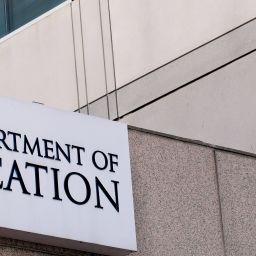
The U.S. Economic Development Administration is providing $1.45 billion in federal grant funding through its FY25 Disaster Supplemental Program. Is your organization eligible to apply?
The Economic Development Administration (EDA) FY25 Disaster Supplemental Program is a federally funded grant that will help communities recover from major disasters in 2023 and 2024, building a stronger economic future in the process. All eligible applicants are encouraged to apply.
Whether you represent a public agency, tribal government, nonprofit, or public college or university, this is an opportunity to support recovery, create jobs, and attract private investment.
Who Is Eligible to Apply for the EDA FY25 Disaster Supplemental Program?
This federally funded grant supports areas affected by federally declared major disasters in 2023 and 2024. Check if your community qualifies by using the FEMA Disaster Declarations list.
Eligible applicants include:
- Local and state governments
- Institutions of higher education
- Tribal governments and consortia
- Economic Development Districts
- Nonprofits working in partnership with a state entity
- Public-private partnerships for infrastructure
Why the EDA FY25 Disaster Supplemental Program Matters
This grant isn’t just about recovery, it’s about resilience. The EDA is looking for projects that help communities bounce back stronger and more competitive than before. That means leveraging partnerships, targeting regional industries, and demonstrating long-term impact.
- Critical infrastructure
- Workforce development
- Manufacturing
- Innovation and entrepreneurship
- Economic recovery and resilience (a required priority for this program)
What Types of Projects Are Eligible for the EDA FY25 Disaster Supplemental Program?
The EDA is focused on long-term economic recovery, not short-term emergency aid. Funded projects must promote economic resilience and fall into one of three paths:
What are the EDA Funding Details?
- Cost share: EDA typically funds up to 80% of eligible project costs; in some cases, up to 100%. The match can include in-kind contributions.
- Indirect costs: Allowed for non-construction projects (up to a negotiated rate or 15% de minimis).
- Ineligible uses: Housing, recreation centers, operating budgets, and projects without a clear economic development impact.
- Deadlines: Readiness and Implementation Path applications are accepted on a rolling basis. Industry Transformation Path applications are due by March 3, 2026. Funds are limited, and early applications are strongly encouraged.
What Makes a Strong EDA Application?
The EDA evaluates proposals on:
- How well the project addresses post-disaster needs
- Potential for long-term economic improvement
- Private sector support and engagement
- Regional alignment (including a strong CEDS or equivalent)
- Feasibility and readiness to begin
This means your grant proposal needs to be more than shovel-ready; it needs to be strategic, collaborative, and forward-thinking.
How McAllister & Quinn Can Help with Your Competitive Grant Application
Securing federal funding takes more than a good idea. It takes the right strategy, partnerships, and narrative. At McAllister & Quinn, we’ve helped public agencies, nonprofits, and universities across the country win more than $15 billion in competitive federal grants, including EDA awards.
If you’re considering applying for the EDA grant, reach out now. Our team can help you:
- Identify the best path and funding level
- Align your project with the EDA’s priorities
- Draft a compelling application package
- Navigate match requirements and documentation
This is a competitive grant opportunity with a limited funding pool, so early, strategic planning is essential.
Let’s explore how we can help you tap into these resources. Contact us today for a free consultation.








